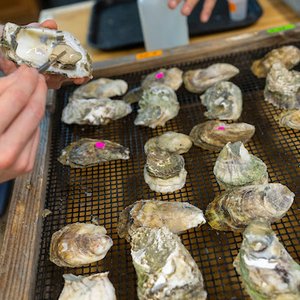Abstract
The present study on spawning and larval rearing of reef associated clownfish, Amphiprion clarkii was investigated under captive condition. Fishes and sea anemones were obtained from the traders and maintained in a conditioning tank. After pair formation, they laid eggs in the spawning tank, which were sticky, capsule shaped and yellow orange in colour. The eggs were allowed to remain in the same tank till hatching up to eight days for incubation. Spawning, embryonic development, hatching success, larval survival and juvenile production were studied in detail. Optimum water quality parameters were also standardized for the hatchery operations. The size range of newly hatched larvae measured 3.5 to 3.8 mm in length and they were transferred to separate larval rearing tanks. The first white band was prominent on the body between 15 to 17th day, an indication of metamorphosis. The complete metamorphosis was occurred on 25th day after hatching. The larvae were initially fed with micro-algae, rotifers, Artemia nauplii and later they accepted frozen Artemia and squashed boiled meat of oysters and clams. The present findings have shown the prospective sign for captive breeding of a highly demanded aquarium fish using brackishwater, by removing the existing foremost technological snag of rearing them in running seawater.
Authors
Swagat Ghosh, T. T. Ajith Kumar, K. Nanthinidevi, and T. Balasubramanian
Published by
International Journal of Environmental Science and Development, Vol. 3, No. 1, February 2012
Download paper from the link below (PDF)








